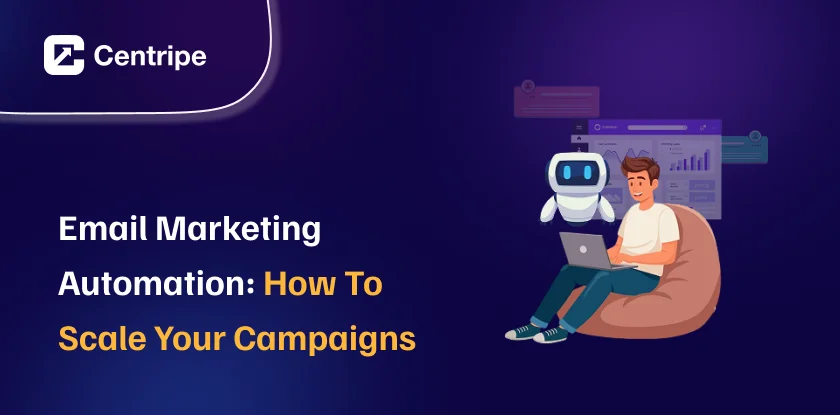Ever feel like managing email campaigns takes too much time and effort? You’re not alone; we’re all sailing in the same boat. Email marketing automation software can be a powerful tool to grow your business, but doing it manually often leads to missed opportunities and wasted resources.
Automation allows you to send personalized messages at the perfect moment. It analyzes customer behavior, does advanced segmentation of your audience, and delivers tailored, targeted emails that drive engagement and results.
Using advanced email automation techniques can simplify the management of complex email campaigns. Let’s explore the best marketing automation software platforms and how they can transform your campaigns!!
What is Email Marketing Automation?
In simple terms, email marketing automation is like setting your campaigns on autopilot. It uses automated email marketing software to send personalized emails based on specific triggers like user actions, preferences, or schedules.
Automated emails activate based on these triggers, distinguishing them from regular marketing emails and targeted messages that are sent on a fixed schedule. For example, if customers abandon their cart, marketing automation campaigns instantly ensure they get a reminder email.
Instead of spending hours sorting contacts and drafting emails, email marketing automation tools do all the difficult tasks. It analyzes behavior, engagement, and funnel stages to ensure every email hits the mark. From welcome emails to re-engagement campaigns, automation has got you covered.
Benefits of Using Email Marketing Automation
The benefits of using email marketing automation are various:
- Increased Efficiency: Automation significantly reduces the manual labor involved in managing email campaigns. This allows marketers to focus on more strategic tasks, such as crafting compelling content and analyzing campaign performance.
- Improved Personalization: With automation, marketers can send highly targeted and personalized emails based on customer behavior and preferences. This level of personalization boosts engagement and conversion rates.
- Enhanced Customer Experience: By delivering relevant and timely content, automation helps improve the overall customer experience. Customers receive information that is pertinent to their needs and interests, fostering a stronger connection with the brand.
- Increased Revenue: Automated email campaigns can drive revenue by sending targeted promotions and offers to customers and prospects. This ensures that marketing efforts are aligned with customer interests, leading to higher sales.
- Better Data Analysis: Automation tools provide valuable insights into customer behavior, enabling marketers to refine their strategies. By analyzing data on open rates, click-through rates, and conversions, marketers can make informed decisions to optimize their campaigns.
Email Marketing Automations to Scale Your Campaigns
Email marketing automation allows you to deliver timely, relevant, and personalized messages at every stage of the customer journey.
Ecommerce integrations enhance these capabilities by facilitating automation features such as abandoned cart recovery, order confirmations, and targeted promotions, specifically with platforms like Shopify, WooCommerce, and Magento.
By capitalizing on real-time opportunities and email templates, you can enhance engagement and drive conversions. Here are five impactful email automation strategies with real-world examples to inspire your campaigns:
1. Abandoned Cart Emails
Abandoned carts cost online retailers billions annually. According to Core sight Research, U.S. retailers lose up to $136 billion in revenue annually.
How to use this automation effectively:
Use tools like Segment or Google Tag Manager to capture customer data including those that involve items added to the cart or actions taken in check-out processes that were not completed.
Then, trigger emails within 24 hours of cart abandonment, reminding users of their items and even adding a limited-time discount to encourage action.
Real-World Example:
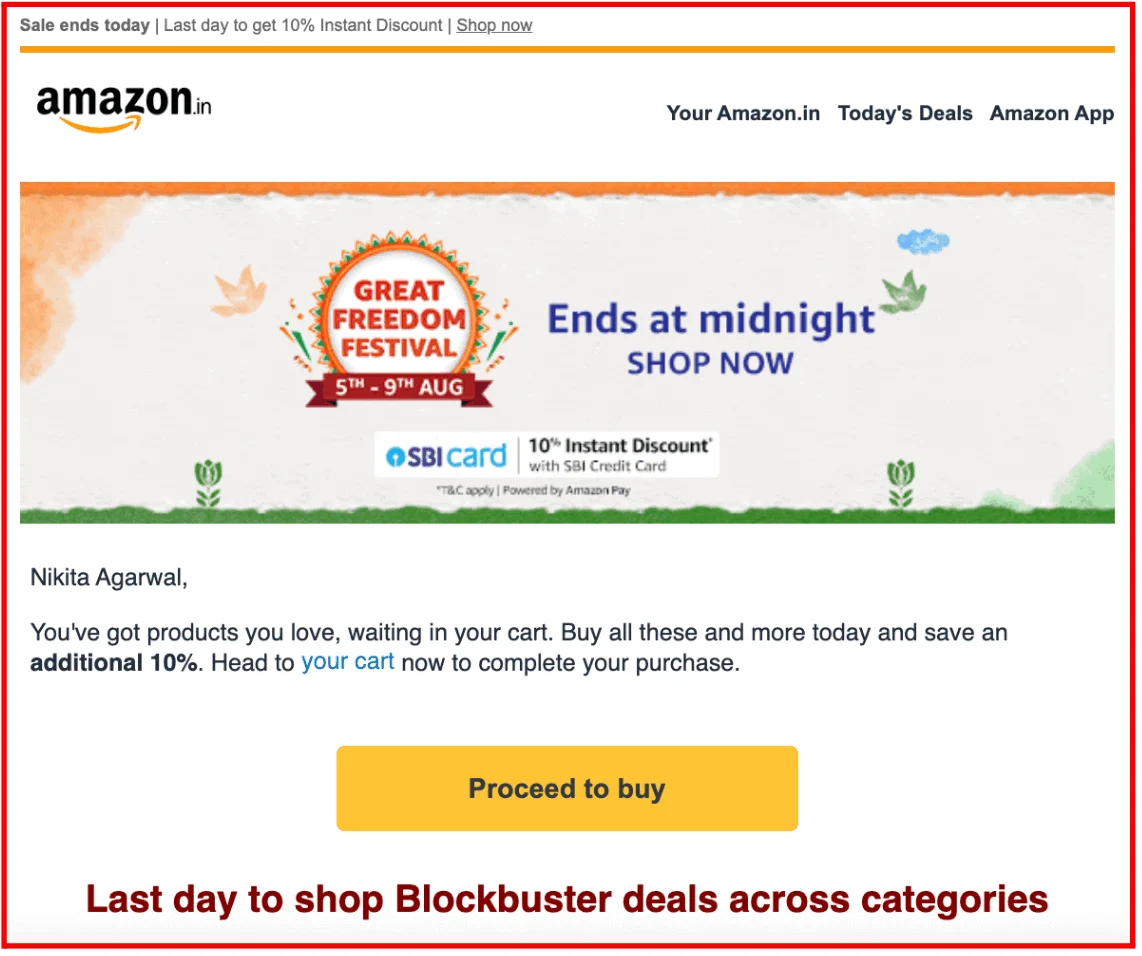
Amazon uses get-back emails, which contain image price information and inventory status of all the features of items that the user left in the cart. Even better, they are often accompanied by urgencies, for example, ‘Only 2 left in stock’.
2. Post-purchase cross-sell and Upsell Emails
Encourage repeat purchases by recommending complementary or higher-value products to existing customers. Cross-selling and upselling improve customer retention and boost lifetime value.
How to use this automation effectively:
Utilize first-party data to look at the customer experience, previous consumption, and implement recommendation platforms such as Algolia or Wiser. For example, if a customer has purchased cameras, recommend lenses, tripods, or even software for the product they bought.
Real-World Example:
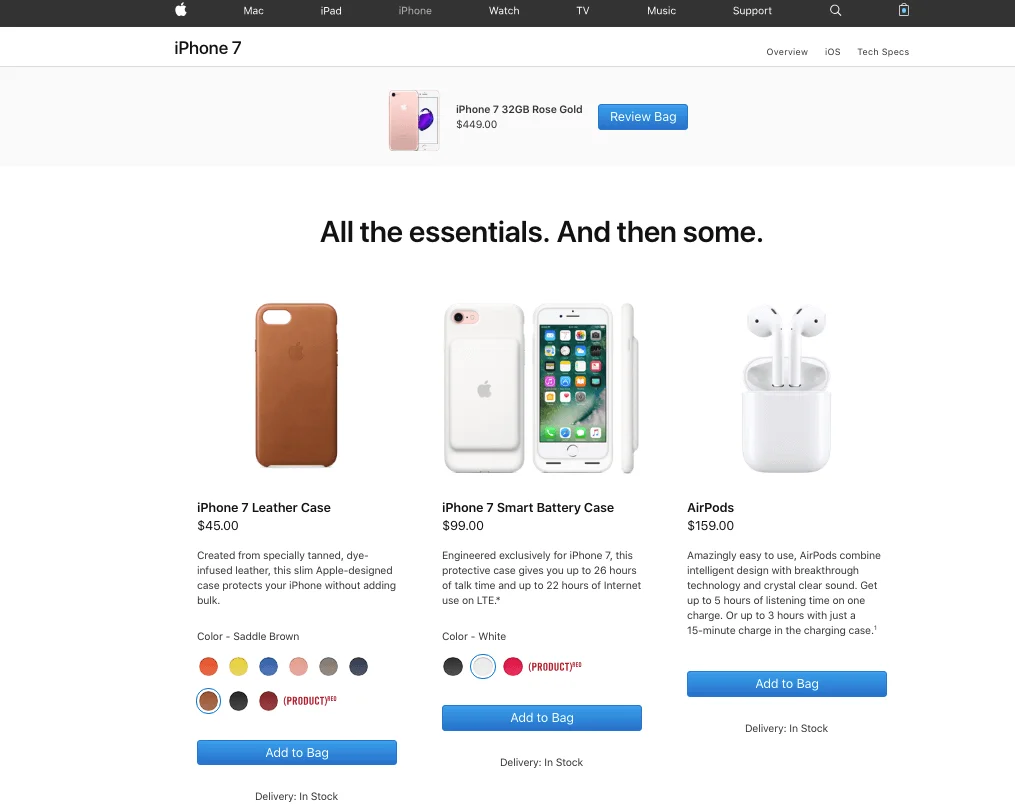
One example of cross-selling that Apple almost always gets right is when, after buying a phone or an iPad, it sends emails suggesting accessories that perfectly fit the device, just in case you might be interested in them.
3. Product or Feature Browsing Emails
Monitor user sessions on your websites to discover potential prospects. If a particular product or any feature has been viewed by a user, then the following mail can be sent with relevant information based on it.
How to use this automation effectively:
Monitor customer behavior with tools like Mixpanel or Crazy Egg. For example, if a user spends time on your product demo page, send an email with a detailed video walkthrough and user testimonials.
Real-World Example:
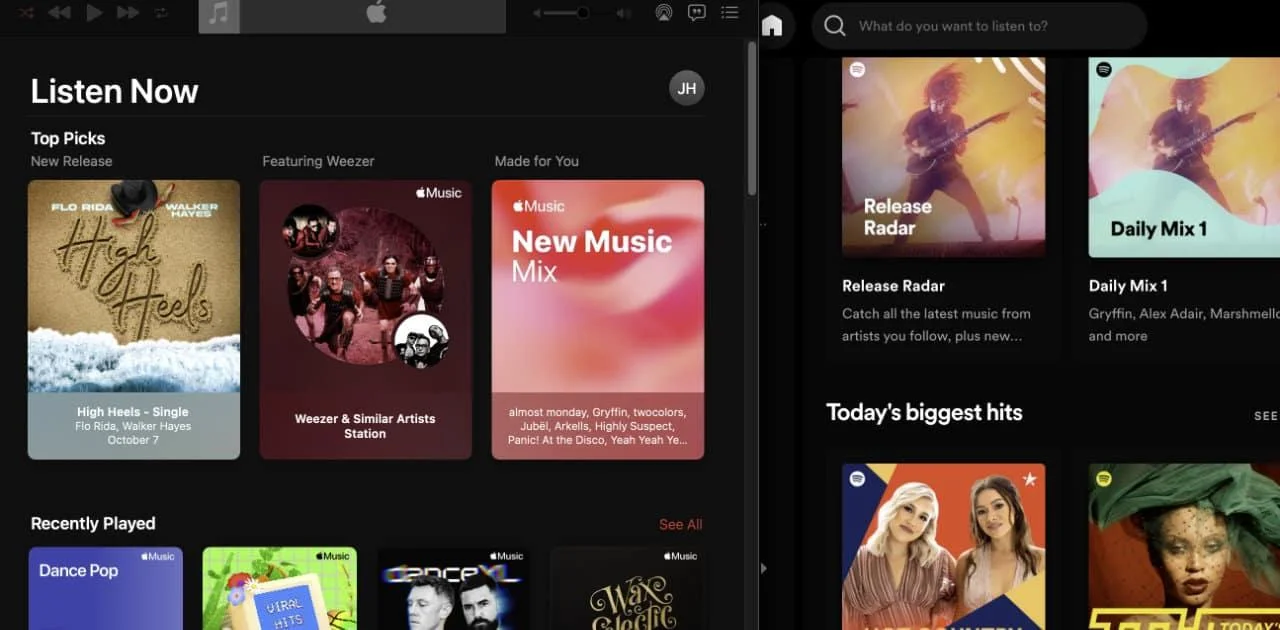
Spotify sends emails to users who explore playlists but don’t add them, nudging them with curated recommendations based on their listening habits.
4. Welcome Emails
Initial contacts are crucial, and that first contact email message can help your sales platform create a positive image of yourself and your business to a viewer.
How to use this automation effectively:
Automate a welcome email when users sign up or create an account. Highlight key features, perks, or next steps to help users get started.
Real-World Example:

Audibles welcome email introduces how the platform works, showcases benefits like monthly audiobooks, and provides clear calls to action (CTAs) to explore the catalog.
5. Drip Email Campaigns
Email marketing is a regular stream of programmed e-mails that are sent to a selected customer base according to the pattern of his/her activities. They are wonderful when it comes to cultivating leads or when you have to direct the users to the customer’s journey.
How to use this automation effectively:
Use visual workflows to create branching paths. For example, if a customer opens the first email, follow up with product recommendations; if they don’t, resend the email with a different subject line.
Real-World Example:
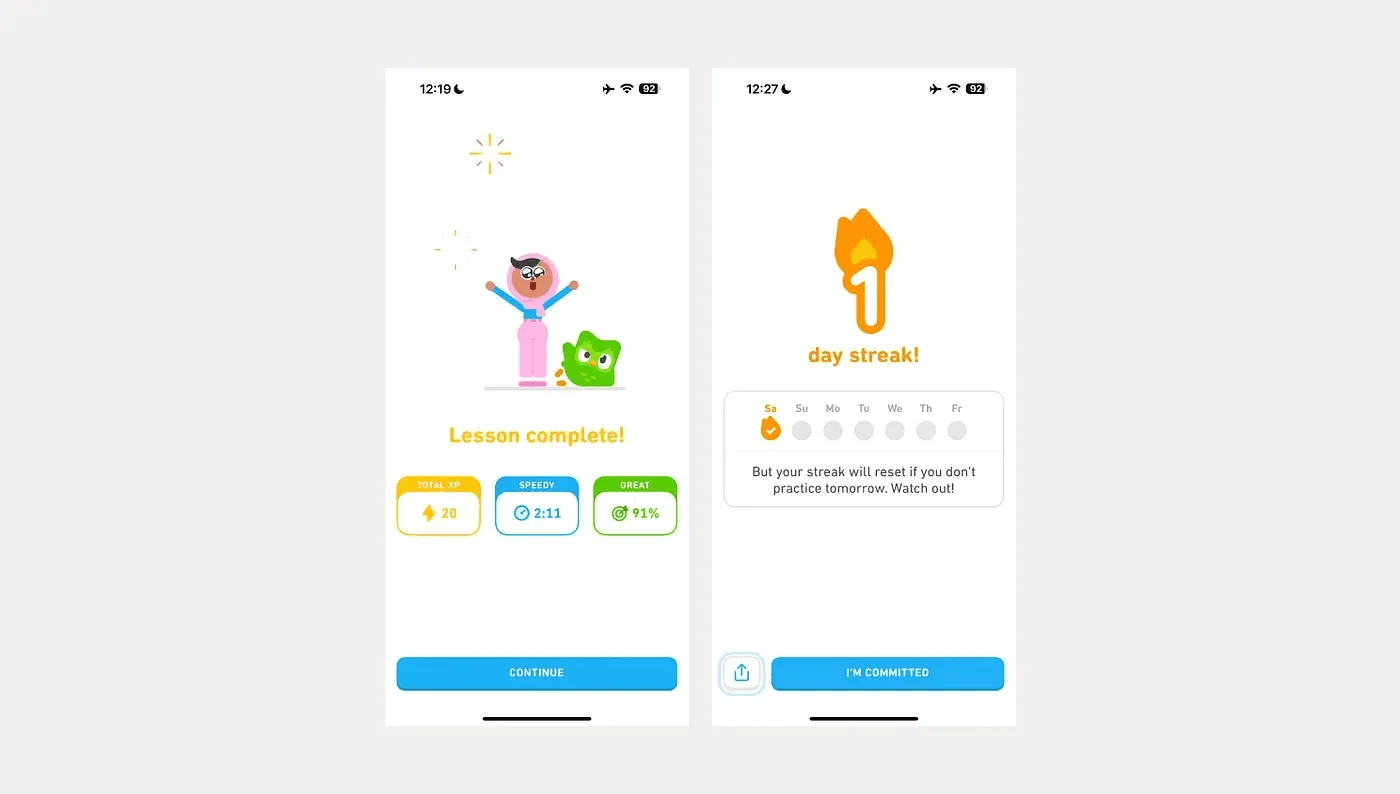
Duolingo uses drip email campaigns to re-engage users who haven’t practiced their lessons. It sends reminders encouraging users to complete their daily streak, paired with motivational messages like “Don’t lose your progress!” and rewards for consistency.
6. Centralize Data for Personalized Automation:
When it comes to email automation, it is crucial to have integrated and segmented customer details. Give your target audience well-defined personas, which can be based on their interests, demographic characteristics, behavior, or the stage of the customer’s journey.
How to use this automation effectively:
A marketing automation platform like Twilio Engage integrates with tools like Segment to collect and activate real-time first-party data. With omnichannel capabilities, teams can deploy campaigns across email, SMS, and more in minutes.
Real-World Example:
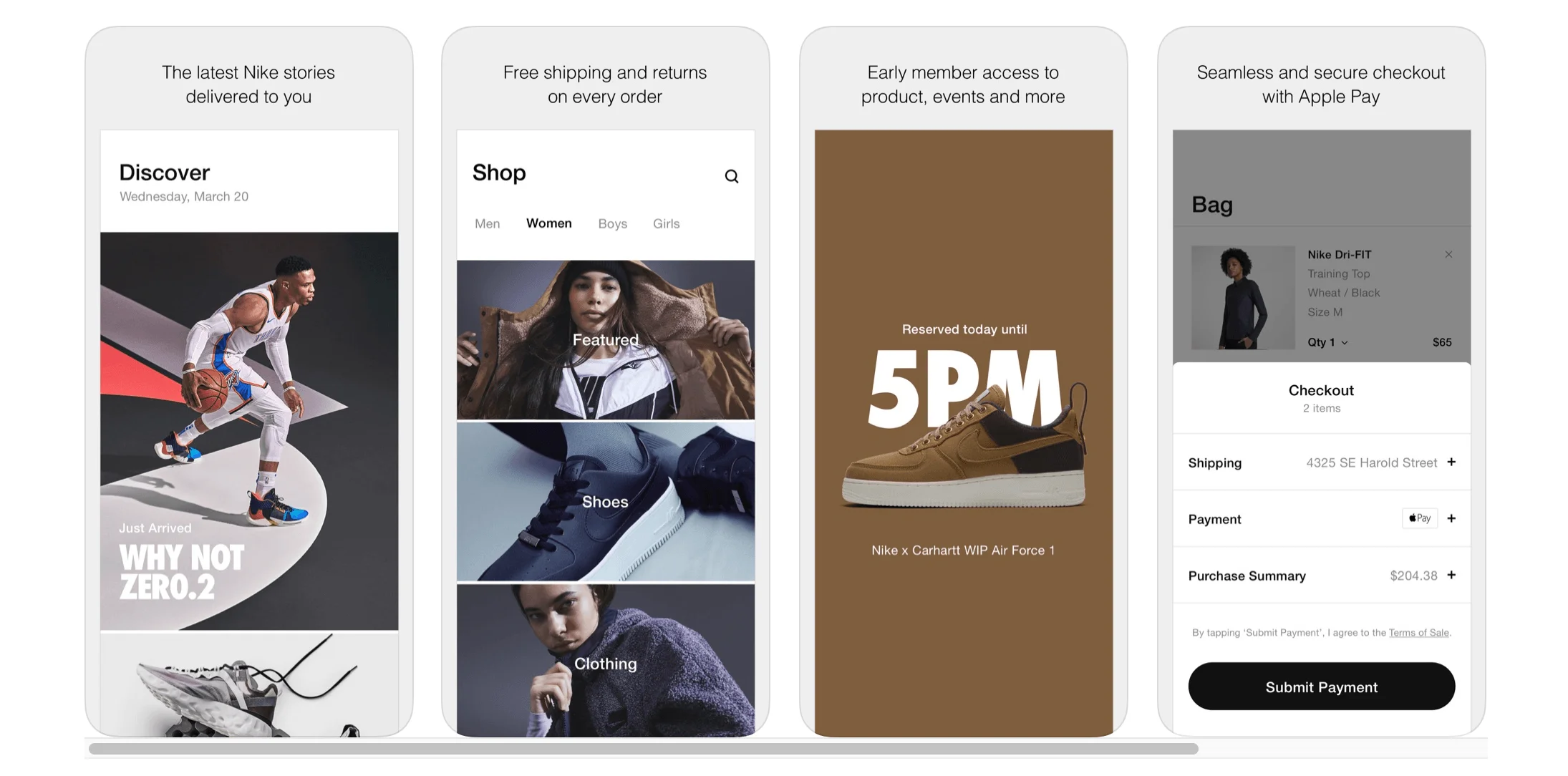
Nike uses customer data to create hyper-personalized campaigns, such as sending workout reminders based on past activity or recommending new products tailored to purchase history.
Conclusion
Marketing automation email isn’t just a convenience; it’s a necessity for modern businesses. Tools like the best email marketing automation software platform simplify workflows, boost engagement, and deliver impressive returns on investment. By utilizing the right automated email marketing tools, you can focus on strategy while letting routine tasks run seamlessly in the background.
Hopefully, this guide has given you some ideas on simplifying your email workflow and workflows through an email automation tool.
